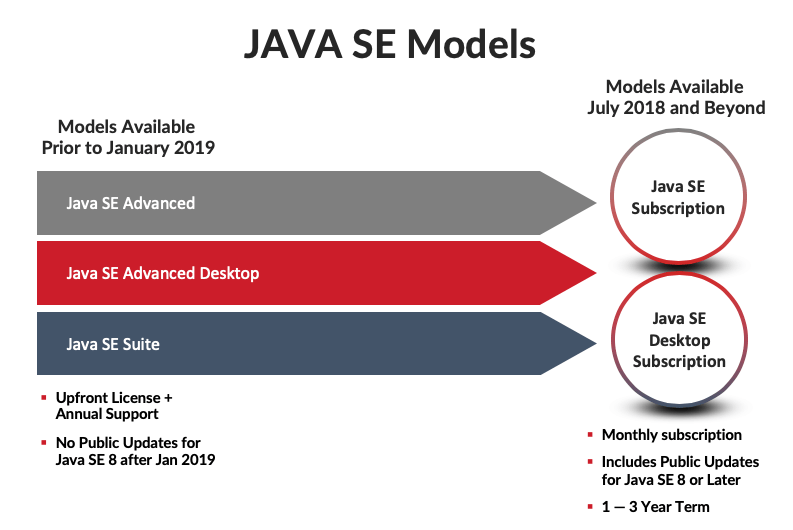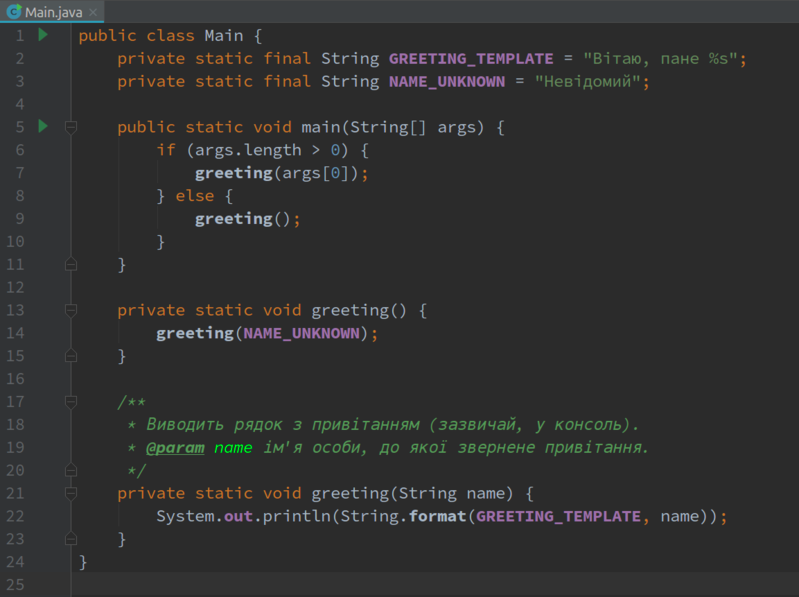The Java ecosystem is in a constant state of evolution, and recent developments have once again brought the platform’s future into sharp focus. For developers, architects, and business leaders, staying informed about the latest Java SE news is not just a matter of curiosity—it’s a strategic necessity. Recent shifts in the commercial licensing landscape have prompted many organizations to re-evaluate their Java strategy, sparking a renewed interest in the vibrant world of OpenJDK distributions and the powerful features of modern Java releases.
This article moves beyond the headlines to provide a comprehensive technical guide for navigating this new era. We’ll explore the implications of licensing changes, dive into the robust ecosystem of OpenJDK alternatives, and demonstrate why embracing modern Java—from Java 17 news to the groundbreaking features in Java 21—is the best way to ensure your applications are secure, performant, and future-proof. Whether you’re a seasoned developer or a decision-maker charting your company’s technology roadmap, this guide offers actionable insights and practical code examples to help you thrive in the dynamic world of Java.
Understanding the Java Licensing Shift and the OpenJDK Ecosystem
For years, the Java community has operated with a relatively stable understanding of licensing. However, recent changes to Oracle’s Java SE Universal Subscription model have introduced a new paradigm. The shift from a processor-based metric to an employee-count metric for some organizations has significant financial and operational implications. This change has acted as a catalyst, compelling businesses to look closely at their Java dependencies and explore the full spectrum of available JDKs (Java Development Kits).
This is where the distinction between Oracle Java and OpenJDK becomes critical. OpenJDK is the open-source reference implementation of the Java SE Platform. It’s the bedrock upon which nearly all Java distributions are built, including Oracle’s. The crucial difference lies in the licensing, commercial support, and long-term support (LTS) policies offered by various vendors.
The Rise of OpenJDK Distributions
The great news for the Java ecosystem news is that it’s more diverse and resilient than ever. Organizations are not locked into a single vendor. A rich ecosystem of providers offers OpenJDK builds that are TCK-certified (passing the Technology Compatibility Kit), ensuring they are fully compliant Java implementations. This provides freedom of choice without sacrificing quality or compatibility.
Here are some of the most prominent players in the OpenJDK news space:
- Eclipse Adoptium (Temurin): A community-driven project providing high-quality, enterprise-ready OpenJDK builds. It’s a vendor-neutral and highly popular choice for developers seeking a reliable, free-to-use JDK.
- Azul Zulu: A certified build of OpenJDK from Azul Systems. They offer both free community editions and commercially supported versions (Azul Platform Core) with extended support and performance optimizations.
- Amazon Corretto: Amazon’s no-cost, production-ready distribution of OpenJDK. Amazon uses Corretto internally for its own services, providing confidence in its stability and performance. It comes with long-term support at no cost.
- BellSoft Liberica JDK: A progressive OpenJDK build with a focus on a wide range of supported platforms, including embedded systems. They offer various support tiers, including a free version.
This competitive landscape is a net positive for the community. It fosters innovation, provides cost-effective alternatives, and ensures the long-term health and accessibility of the Java platform, regardless of any single vendor’s commercial strategy.
Modern Java in Practice: Why Upgrading is Essential
Regardless of which JDK distribution you choose, the most impactful decision you can make is to stay on a modern, supported LTS release like Java 17 or Java 21. The evolution from Java 8 news and Java 11 news to the latest versions is not just about incremental updates; it’s about a fundamental improvement in developer productivity, application performance, and security.

Modern Java introduces language features that drastically reduce boilerplate code, making your codebase cleaner, more readable, and less prone to errors. Let’s look at a classic example: data transfer objects (DTOs).
From Verbose POJOs to Concise Records
Before Java 14, creating a simple, immutable data carrier class was a ceremony of boilerplate. You had to write a constructor, private final fields, getters for each field, and correctly implement equals(), hashCode(), and toString().
The “Old Way” – A Traditional POJO:
public final class UserDTO {
private final String username;
private final String email;
private final long userId;
public UserDTO(String username, String email, long userId) {
this.username = username;
this.email = email;
this.userId = userId;
}
public String getUsername() {
return username;
}
public String getEmail() {
return email;
}
public long getUserId() {
return userId;
}
@Override
public boolean equals(Object o) {
if (this == o) return true;
if (o == null || getClass() != o.getClass()) return false;
UserDTO userDTO = (UserDTO) o;
return userId == userDTO.userId &&
java.util.Objects.equals(username, userDTO.username) &&
java.util.Objects.equals(email, userDTO.email);
}
@Override
public int hashCode() {
return java.util.Objects.hash(username, email, userId);
}
@Override
public String toString() {
return "UserDTO[" +
"username='" + username + '\'' +
", email='" + email + '\'' +
", userId=" + userId +
']';
}
}Java 16 finalized Records, a new type of class that eliminates all of that boilerplate. The following code is functionally identical to the verbose class above.
The “Modern Way” – A Java Record:
// This single line generates the constructor, getters, equals(), hashCode(), and toString()
public record UserDTO(String username, String email, long userId) {
// You can add compact constructors for validation, static factory methods, or instance methods
public UserDTO {
if (username == null || username.isBlank()) {
throw new IllegalArgumentException("Username cannot be blank.");
}
}
}
// Usage:
// UserDTO user = new UserDTO("testuser", "test@example.com", 123L);
// System.out.println(user.username()); // Note the accessor method nameThis is a game-changer for productivity. By adopting modern Java, you write less code, which means fewer bugs and easier maintenance. This is just one of many features, including Pattern Matching for instanceof, Sealed Classes, and Text Blocks, that make upgrading a high-return investment.
High-Performance Concurrency with Project Loom
Perhaps the most exciting development in recent JVM news is the arrival of Project Loom, which delivered Virtual Threads and Structured Concurrency, finalized in Java 21. This completely revolutionizes how we write concurrent applications in Java.
For decades, Java threads have been mapped 1:1 to operating system (OS) threads. OS threads are a scarce and heavy resource, limiting the number of concurrent tasks an application can handle. Project Loom news introduced virtual threads, which are lightweight threads managed by the JVM, not the OS. A single OS thread can run millions of virtual threads, allowing for a massive increase in concurrency with minimal code changes.
Unlocking Massive Scalability with Virtual Threads
Imagine a web server that needs to handle thousands of simultaneous requests. With traditional platform threads, you’d quickly exhaust system resources. With virtual threads, it’s trivial.

This example demonstrates creating a large number of tasks that would be impossible with platform threads.
import java.time.Duration;
import java.util.stream.IntStream;
public class VirtualThreadsDemo {
public static void main(String[] args) throws InterruptedException {
long startTime = System.currentTimeMillis();
// Create and start 1,000,000 virtual threads
// This would instantly crash with platform threads
try (var executor = java.util.concurrent.Executors.newVirtualThreadPerTaskExecutor()) {
IntStream.range(0, 1_000_000).forEach(i -> {
executor.submit(() -> {
// Simulate a non-blocking I/O operation
try {
Thread.sleep(Duration.ofSeconds(1));
} catch (InterruptedException e) {
Thread.currentThread().interrupt();
}
if (i % 100_000 == 0) {
System.out.println("Task " + i + " completed on thread: " + Thread.currentThread());
}
});
});
} // executor.close() will wait for all tasks to complete
long endTime = System.currentTimeMillis();
System.out.printf("All tasks completed in %d ms%n", (endTime - startTime));
}
}The latest Spring Boot news highlights that frameworks are already integrating virtual threads, allowing developers to enable them with a simple configuration property. This is a prime example of how the entire Java ecosystem news rallies around major platform improvements.
Safer Concurrency with Structured Concurrency
Alongside virtual threads, Java 21 introduced Structured Concurrency. It simplifies multithreaded programming by treating tasks running in different threads as a single unit of work. This greatly improves error handling and observability in concurrent code.
import java.util.concurrent.Future;
import java.time.Instant;
import jdk.incubator.concurrent.StructuredTaskScope;
// Represents a response from a remote service
record OrderInfo(String orderId, String details) {}
record UserInventory(String userId, String inventory) {}
public class StructuredConcurrencyDemo {
// Simulates fetching order details from a remote service
OrderInfo fetchOrderDetails() throws InterruptedException {
Thread.sleep(100); // Simulate network latency
return new OrderInfo("order-123", "Product A, Product B");
}
// Simulates fetching user inventory from another service
UserInventory fetchUserInventory() throws InterruptedException {
Thread.sleep(150);
// Uncomment to simulate a failure
// if (true) throw new RuntimeException("Inventory service down!");
return new UserInventory("user-456", "5 items in cart");
}
public void handleRequest() throws InterruptedException, java.util.concurrent.ExecutionException {
// Create a scope that shuts down if any subtask fails
try (var scope = new StructuredTaskScope.ShutdownOnFailure()) {
// Fork two concurrent tasks
Future<OrderInfo> orderFuture = scope.fork(this::fetchOrderDetails);
Future<UserInventory> inventoryFuture = scope.fork(this::fetchUserInventory);
// Wait for both tasks to complete or for one to fail
scope.join();
scope.throwIfFailed(); // Throws an exception if any subtask failed
// If we reach here, both tasks succeeded. We can now get the results.
OrderInfo order = orderFuture.resultNow();
UserInventory inventory = inventoryFuture.resultNow();
System.out.println("Successfully fetched data: " + order + ", " + inventory);
}
}
}This pattern is far more robust than traditional approaches using CompletableFuture, as it ensures that if one operation fails, the other is automatically cancelled, preventing resource leaks and simplifying logic.
Best Practices and The Broader Ecosystem
Navigating the current Java landscape successfully requires a strategic approach. Here are some best practices and considerations:

Strategic JDK Selection and Management
- Audit Your Usage: Understand which applications use which Java versions and distributions. Tools from vendors like Azul can help with discovery.
- Default to a Free OpenJDK Build: For most new projects, starting with a free, TCK-certified OpenJDK distribution like Eclipse Temurin or Amazon Corretto is a safe and cost-effective choice.
- Evaluate Commercial Support When Needed: For mission-critical applications requiring 24/7 support, extended security patches for older versions, or specific performance guarantees, evaluate commercial offerings from Oracle, Azul, or BellSoft. The new pricing models simply become one factor in that evaluation.
- Use Build Toolchains: Leverage Maven news and Gradle news to learn about their toolchain features, which allow you to specify the exact JDK version required for a project, ensuring consistent builds across all developer machines and CI/CD pipelines.
Embracing the AI Revolution in Java
The Java ecosystem is not standing still. One of the most exciting recent trends is the integration of AI capabilities directly into Java applications. Libraries and frameworks are emerging that make it easy to interact with Large Language Models (LLMs).
The Spring AI news is particularly exciting, as it aims to apply the familiar Spring programming model to AI engineering. Similarly, libraries like LangChain4j provide a powerful toolkit for building sophisticated AI-powered applications. This demonstrates Java’s continued relevance in cutting-edge domains.
Conclusion: A Thriving and Adaptable Future
The recent Java SE news surrounding licensing models is not a crisis but a maturation point for the ecosystem. It has accelerated the adoption of diverse OpenJDK distributions and highlighted the critical importance of staying current with modern Java versions. The freedom to choose a JDK that fits your technical and business needs is a testament to the strength and flexibility of the open-source community.
For developers and organizations, the path forward is clear. Embrace the power of modern Java. The productivity gains from features like Records, the performance revolution from Project Loom’s virtual threads, and the exciting new frontiers in AI integration make a compelling case for upgrading. By making informed decisions about your JDK strategy and investing in modernizing your codebase, you position your applications to be more scalable, resilient, and maintainable for years to come, ensuring that Java remains a cornerstone of enterprise software development.

